Global Issue Technology
대체수자원을 고도의 여과·분리기술 이용
물과 에너지의 시너지 효과 극대화한다
UF·MF·NF·RO 기술 이용 식수·초순수 산업용수 생산 및 발전시설에 재이용
국제담수화협회, “에너지 감소·비용 절감 측면 물재이용·해수담수화 기술 각광”
수질전문가 Anthony Bennett은 미국 『Filtration + Separation』 저널 2015년 5∼6월호의 기고문에서, 수처리 시스템과 전력 생산 시스템 사이 시너지 효과를 관찰하여 먹는물 생산과 전력 생산의 전체 효율을 개선시키는 방법, 즉 바닷물과 같은 대체수자원을 이용하여 이들을 고도의 여과·분리 기술을 통해 처리하고 재사용하여 식수원에 대한 부담을 줄이는 방안을 소개했다. 그 내용을 번역했다.
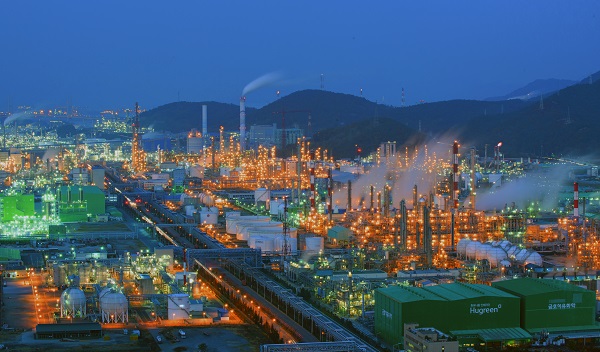
캘리포니아·애리조나 등 멤브레인 플랜트 건설 보편화
우리는 뉴스에서 물부족과 기후 변화에 대한 이슈를 계속해서 접하고 있으며, 기술 전문가에게만 국한되어 왔던 이러한 사항들이 정치 및 경제 분야에서도 통상적인 이슈가 되고 있음을 인식하고 있다. 물부족은 인구가 증가하고 산업화가 진행됨에 따라 지속적으로 제기되는 중요하면서 정형화된 문제점이다. 관심을 두고 지속적으로 문제를 다루고 있는 미디어 덕분에 현 상황을 개선하고 안정적인 식수원을 제공하려는 기술 및 제조 공정에서 많은 발전이 이루어졌다.
특히 해수는 해안 지역에서 물부족 문제를 해결할 수 있는 확실한 자원이나 즉시 사용 가능한 기존의 공급체계가 중단되었을 때는 이에 대체 가능한 수자원을 이용해야 한다. 여기서 대체수자원이라 함은 유기 또는 무기 오염물질과 독성 물질 등의 요소들을 제거하는 고도의 기술력이 필요하여 이제껏 적극적으로 개발되지 않았던 수자원을 말한다.
이러한 대체수자원으로는 매우 혼탁한 강물, 부영양화 상태의 호숫물 또는 2차 처리된 배출수 등이 있다. 오늘날 대체수자원을 이용하여 간접적인 식수 공급에 적용, 반도체와 같은 초순수(ultrapure water) 공정에 적용, 또는 산업계 제조 공정 및 발전 플랜트에서 고순도 물의 이용 등 성공적으로 사용되어 왔다.
물부족과 관련된 문제는 점점 증가하고 있는 글로벌 에너지 소비 이슈와 융합되어 있다. 물의 사용과 에너지 소비는 긴밀한 상관 관계를 가지는데, 물의 생산에는 엄청난 양의 에너지를 필요로 하고 전기 생산에 역시 상당한 양의 물을 필요로 한다. 따라서 식수를 처리하는 공정 해결 방법에서 동시에 에너지 보존의 필요성도 고려하여 검토되어야 한다.
수자원을 재이용하는 기술의 발전으로 많은 설계 엔지니어들이 하나의 목적으로만 물의 효과적 사용을 추진했으나 이제는 효과적인 처리 기술의 개발로 하나 이상의 목적을 제공하는 해결책을 얻을 수 있게 되었다. 즉, 해수담수화 기술 발전으로 해수를 바로 식수로 바꾸거나 또 다른 추가 처리과정을 거쳐 산업용수로도 사용 가능하도록 하는 경제적인 방법이 가능해졌다.
We read about water scarcity and climate change issues in the news regularly. What used to be a topic restricted to technical specialists has now become a common focus for conversation in political and economic arenas. Water scarcity is a significant and well documented problem that continues to cause concern as the human population grows and industrialisation increases. But all the media attention has led to many advances, both in terms of technology and in manufacturing processes, to improve the situation and provide reliable sources of drinking water.
Seawater provides an obvious resource to tackle the problem of water scarcity, especially and obviously in coastal areas, but alternative sources of water can also be utilised where a readily available conventional supply is unavailable. We can define alternative sources of water as those which have not been significantly exploited, due to the need for advanced technology to remove elements such as organic and inorganic pollutants and toxins.
Examples of alternative sources of water include highly turbid river water, eutrophic lake water or secondary treated effluent. Alternative sources have been successfully used for indirect drinking applications, ultrapure water processes such as semiconductors or high purity water applications in manufacturing industry or power generation systems and we describe examples of these applications below.
Compounding the problems associated with water scarcity is the expanding global energy consumption issue. Water usage and energy consumption are intimately linked - the production of water requires a significant amount of energy and the production of energy requires a significant amount of water. As a result, process solutions to produce drinking water must also take into account the need for energy conservation.
Advances in water reuse technologies have allowed designers and engineers to make better use of water that has already served one need but with effective treatment could go on to serve one or more additional purposes. However, advances in desalination technology can make it more economical to turn seawater directly into drinking water or, with further treatment, into water for industrial purposes.
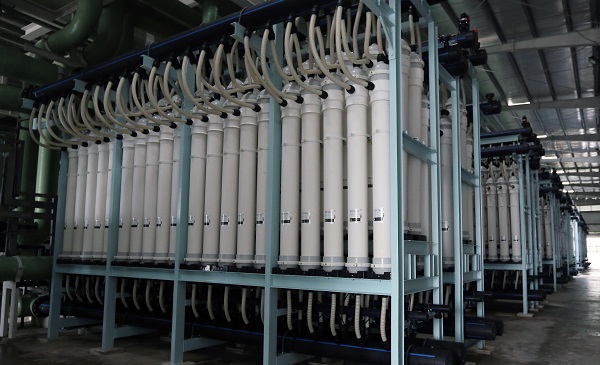
물순환 사이클(Hydrological cycle)
그러나 전체 물순환 사이클을 고려하지 않고 수처리·폐수처리의 개별적인 이용에만 집중하면 환경의 지속유지 노력을 증가시키는 기회를 간과할 수 있다. 이에 물순환 과정을 통합적인 방법으로 다루어 각 분야를 별개의 것으로 집중하여 연관성이 없는 개념으로 인식하는 오류를 피해야 한다.
대체수자원 응용의 효과에 대한 사항은 지난 10년 동안 잘 이해되어 왔다. 물순환 사이클에서 물의 소비를 관리하고 조절하는 직접적인 책임은 지방 정부, 기관, 그리고 규제기관 내에 있다. 이들의 우선 목표는 소비량을 줄이고, 수요를 조정하고, 누수 및 증발에 따른 손실을 최소화하여 결국 물관리 프로세스의 효율성을 최대로 하는 것이다.
지구 전체로 보면 물순환은 바다와 육지에서의 증발, 구름의 형성, 강수의 형태로써 다시 지표에 떨어지고 강물로 모아져 바다로 흘러 들어가거나 식수로 사용 그리고 사용 후 도시로부터 폐수가 배출되는 과정으로 설명된다. 우리는 이러한 사용 주기를 국지적인 관점으로 줄여, 처리된 폐수가 인근지역의 수처리 시설에서 처리되어 식수로 재사용되거나 음용수 수준으로 처리된 폐수의 간접적인 사용, 즉 지하수 대수층에 보충 용도로 사용하는 것 등이 고려되어야 한다.
해수를 즉시 사용하지 못하는 지역의 경우, 발전소 플랜트는 대체자원으로부터 공급받는 도시 근교의 폐수처리장 및 정수장 주변에 근접한 거리에 위치하는 것을 볼 수 있다. 때문에 처리된 처리수 개념이 아닌 발전소에서의 냉각수 및 공정수의 대체수자원으로 사용을 고려할 수 있다. 이를 위해서는 도시의 물순환 사이클 전체를 통합적으로 관리할 수 있어야 한다. 따라서 발전과 수처리 공정을 하나의 관리체계로 통합하면 물의 오염을 줄이거나 높은 수질의 먹는물을 계속 보유하는 등의 많은 장점을 얻게 된다.
But the opportunities for increasing environmental sustainability can be overlooked by concentrating on the separate applications of water and wastewater treatment without considering the whole hydrological cycle, which needs to be managed in an integrated way so we avoid focusing on these disciplines as unrelated subjects. The benefits of utilising alternative water sources have become better understood over the last decade.
The responsibility for the management and control of water consumption throughout the hydrological cycle typically rests with local governments, agencies and their regulators. Their priorities are to reduce waste, control demand, minimise leakage and evaporation losses and maximise the efficiency of the water management process.
On a planetary scale, the hydrological cycle involves evaporation from sea and land, the formation of clouds and then the water falling back to Earth as precipitation, being collected in rivers and entering the sea again before being intercepted for use as drinking water and discharged from municipalities as treated effluent. We can think of the concept of shrinking this cycle and just consider the local perspective, with treated wastewater being recycled into drinking water in adjacent treatment plants, or planned indirect potable use of wastewater, where treated wastewater is used to replenish groundwater. The groundwater is then used as a drinking water source.
Often, when seawater is not readily available, we find power generation facilities located on the outskirts of municipalities along with wastewater treatment facilities and drinking water treatment systems fed from alternative sources. We could consider using these alternative sources of water for cooling and process water in the power station rather than using treated water but this requires us to be able to manage the hydrological cycle for the city as a whole. If we integrate power generation and water treatment processes as a single management activity, we can focus on various benefits including reduced aqueous pollution into receiving waters and retention of high quality water for drinking supply.

하이브리드 방법(Hybridisation)
하이브리드 방법은 서로 다른 단위별 처리 방법의 장점을 살린 시너지에 의하여 전체 시스템의 효율을 높이는 접근 방법이다. 도시의 물관리 메카니즘에서 밤이나 여름 등 수요가 적은 기간에 발생하는 에너지의 저효율 기간을 줄임으로써 발전 시스템의 운영 효율성을 증가시킬 수 있으며, 이렇게 사용하지 않은 발전 용량은 충분한 물수요 또는 저장조가 준비되어 있으면 수처리 시스템 효율을 높이는데 사용이 가능하다.
또한 에너지 수요가 낮은 기간 또는 생산량이 많아지는 기간 동안 발생되는 풍력·태양전지 시스템 등 간헐적으로 재사용 가능한 방법에 의해 만들어진 잉여 에너지는 수처리 공정에 직접 사용될 수 있다. 즉, 하이브리드 방법으로 이러한 사용되지 않은 에너지 발생량을 전체적인 물관리 메카니즘에 포괄적으로 이용할 수 있다. 계획된 간접적인 식수로의 이용을 위한 폐수처리 사례를 보면 수요량은 하루의 기간 동안 달라질 수 있다. 수요가 낮은 기간 동안에는 처리된 물이 지하수 또는 저수지에 빠른 속도로 많은 양이 쌓이게 되어 염분이 있는 지역의 대수층이나 지표수 공급라인에 보충될 수 있다.
지하수의 과도한 추출로 인한 해수의 유입을 조절하거나, 향후 기후 변화로 인해 해수면이 증가하는 것에 대처할 수 있는 해결책이 되기도 한다. 또한 최대생산으로 판매되지 않은 전기에너지 혹은 초과 생산된 재생에너지를 수요가 적은 기간에 청정한 지하수원으로 변환하여 향후 수요가 많은 기간에도 사용이 가능하다. 즉, 효과적으로 에너지를 저장하고 그에 따라 지하수 또는 저수지 물을 사용하는 것은 배터리 사용의 원리와 같은 개념이라고 볼 수 있다.
Hybridisation is an approach to increase the efficiency of an overall system by taking advantage of the synergy between different unit process solutions. In a municipal water management plan, the efficiency of power generation systems could be increased by reducing the inefficient period which occurs during periods of low demand such as during the night or in the summer months. This unused power generation capacity could be used to increase water treatment rates if there is sufficient water demand or storage capacity.
Also, any surplus energy generated from intermittent renewable sources, such as wind or solar photovoltaic systems, during periods of low demand and high production could be directed towards water treatment processes. Hybridisation could be used to exploit this unused capacity as part of a comprehensive water management plan. Using the example of treating wastewater for planned indirect drinking use, demand periods would tend to vary on diurnal cycles. During the low demand period, water could be “banked” into groundwater or reservoir storage at a high rate to create fresh water aquifers in brackish or saline zones, or supplement surface water supplies.
Also, where appropriate, this could help control seawater ingress due to over abstraction of groundwater or, in the future, help combat rising seawater levels expected due to climate change. We can argue that we could then effectively convert unsold off peak electricity or excess renewable production into valuable fresh groundwater in the low demand period, for future use in the high demand period, hence effectively storing energy and using the groundwater or reservoir ‘bank’ like a battery.
담수화 기술(Desalination technology)
증발법은 멤브레인 공정, 또는 이들의 혼합기술을 통해 해수를 담수화 할 수 있다. 19세기 후반, 담수화 기술에서 첫 번째 중요한 기술개발은 다중효용 증발법(Multiple Effect Distillation, MED)이다. 첫 번째 증발기(effect)에서 관을 통해 흐르는 예열된 공급수가 증기에 의해 가열되고 유입수에 포함된 물의 일부가 증발하게 된다. 염수의 증발로 각 증발기 흐름에서 발생한 물의 증기는 다음 증발기로 흐르고, 여기서 더 낮은 온도에서 열을 가하여 추가적인 증발을 유발한다.
그리고 증기가 응축하면서 잠열을 방출하여 염수의 일부를 다시 증발시킨다. 이러한 증발-응축(Evaporation-condensation) 공정은 증발기와 증발기 사이에서 반복된다. 이를 다중효용(Multiple effect)으로 표현, 각각의 증발기는 연속적으로 낮아지는 압력과 온도 조건에서 작동한다.
1960년대 중반에는 다단 플래시법(Multistage Flash, MSF) 증류가 널리 사용되었다. MSF에서 염수(이후 재사용 흐름과 섞이게 됨)는 최고 염수온도(Maximum top Brine Temperature, TBT)에 도달할 때까지 압력과 열을 받는다. 가열된 염수가 물의 포화 증기압보다 약간 낮은 압력이 유지되는 스테이지(stage)로 흘러 들어가면 그 속에 있던 물의 일부가 증기로 증발한다. 증발한 증기는 분무 제거장치를 거쳐 열 교환 관의 외부 표면에서 응축한다. 응축된 액체는 별도의 트레이(trays)로 떨어져 최종 생산수가 된다.
증발하지 않은 염수는 두 번째 스테이지에 들어가 더 낮은 온도에서 다시 증발하여 계속해서 생산수를 만든다. 냉각된 염수와 냉각된 증류액 모두 플랜트 설비에서 블로우다운(blow-down) 염수와 생산수로써 최종 방출될 때까지 증발-냉각(Flashing-cooling) 공정이 각각의 스테이지에서 반복된다.
Desalination of seawater can be achieved by using thermal or membrane processes, or a hybrid combination of the two types. In the late 19th century, the first major technical advance in desalination technology was the development of the multiple effect distillation (MED) process. Here, pre-heated feed water flowing over tubes in the first effect is heated by prime steam, resulting in evaporation of a fraction of the water content of the feed.
The water vapour generated by brine evaporation in each effect flows to the next effect, where heat is supplied for additional evaporation at a lower temperature. There the vapour condenses, giving up its latent heat to evaporate an additional fraction of water from the brine. The process of evaporation-plus-condensation is repeated from effect to effect, hence the term ‘multiple effect.’ Each effect operates at successively lower pressure and temperature.
In the mid-1960s multistage flash (MSF) distillation became popular. In MSF, seawater (after mixing with the recycle stream) is pressurised and heated to the maximum top brine temperature(TBT). When the heated brine flows into a stage maintained at slightly below the saturation vapour pressure of the water, a fraction of its water content flashes into steam. The flashed vapour passes through a mist eliminator and condenses on the exterior surface of heat transfer tubing.
The condensed liquid drips into trays as a product water. The unflashed brine enters a second stage where it flashes again to vapour at a lower temperature, producing a further quantity of product water. The flashing-cooling process is repeated from stage to stage until both the cooled brine and the cooled distillate are finally discharged from the plant as blow-down brine and product water.

역삼투 기술(Reverse Osmosis)
MSF(다단 플래시법)가 개발될 즈음 최초의 역삼투(RO) 멤브레인이 제작되었다. RO에서는 원수가 유입수의 삼투압 이상 압력에서 멤브레인 면을 기준으로 유입수 쪽에서 생산수 쪽으로 흐르게 되며, 이때 생산수를 ‘투과수(permeate)’ 라고 부른다. 이는 자연적인 삼투압 흐름에 반대되는 것으로 소금 이온물질은 농축수 채널 쪽에 농축된 형태로 축적된다. 담수화 초기에는 용적식 펌프(positive displacement pump)와 원심 펌프가 역삼투 시설에 필요한 에너지의 100%를 공급했다.
그러나 에너지 회수 분야의 개발로 에너지 사용의 개선이 이루어졌다. 역삼투 시스템에서 사용된 여분의 에너지는 다시 회수하여 사용할 수 있게 되었으며, 이러한 재사용으로 해수의 삼투압 이상으로 승압하는 데 필요한 에너지의 25∼30%까지 얻게 되어 담수화 시설의 총 에너지 요구량을 현격하게 낮출 수가 있었다. 오늘날 거의 모든 멤브레인 기반 담수화 시설은 다양한 형태의 에너지 회수장치를 사용한다. 펌프, 에너지 회수기술 및 멤브레인 소재기술의 기술개발이 운전비용을 더욱 낮추는데 중요한 역할을 하고 있다.
담수화 비용을 낮추는 데 또 다른 중요한 측면은 멤브레인 기반 역삼투 시스템의 투자비용을 줄이는 것이다. 이 비용은 물의 생산비용과 직접적인 관계가 있으며, 대부분의 시설들이 자본투자 파이낸싱(financing)으로 투자비를 마련하며 초기 투자비용은 물의 생산에 소요되는 모든 비용으로 분할 상환되기 때문이다. 더욱 효율적인 에너지 회수장치와 새로운 종류의 멤브레인 개발, 그리고 역삼투 멤브레인에서의 처리유량 증가 등으로 인해 앞으로는 처리된 물의 단위당 에너지 비용은 계속해서 감소할 것이다. 한편, 새로운 멤브레인의 출현으로 오염에 대한 내성은 더욱 개선될 것이다.
역삼투 시스템으로 유입되는 원수는 UV 살균공정 및 한외여과(UF), 정밀여과(MF), 나노여과(NF) 등의 멤브레인 기술을 이용한 전처리 과정을 거쳐 파울링 물질 등 오염물을 줄이거나 제거한다. 한편, 한외여과와 정밀여과 기술은 막 생물 반응기(MBR) 시스템과 같이 사용될 수 있으며, 높은 유기성 파울링(fouling) 물질을 함유한 유입수는 호기성 생물반응조(aerobic bioreactor)에서 처리되어 총 부유성 고형물(Total Suspended Solids, TSS) 및 화학적 산소요구량(Chemical Oxygen Demand, COD) 물질이 제거되며 MBR 조에서는 별도의 외부에 설치되는 사이드 스트림(side stream) 구성이나 반응조 내에 침지된 형태의 멤브레인 시스템으로 주로 입자성 물질이 제거된다.
At the same time as MSF was being developed the first reverse osmosis(RO) membrane was produced. In RO, treated water termed ‘permeate’ passes from the feed to the product side of the membrane when a pressure exceeding the osmotic pressure of the feed water is applied. This ‘reverses’ the natural osmotic flow and concentrates salt ions into a waste concentrate stream. In the early years of desalination, positive displacement and centrifugal pumps provided 100% of the energy to power a seawater RO plant, but innovations in the field of energy recovery have improved efficiency.
Waste energy from RO systems can be recovered and can account for 25∼30% of the energy required to overcome the osmotic pressure of seawater. This lowers the total energy requirement of desalination plants dramatically. Nearly all membrane-based desalination plants today utilise some form of energy recovery. Future innovations in pumping and energy recovery, combined with innovations in membrane technology, hold the key to lowering the operating cost of desalination even further.
An equally important aspect of lowering the costs of desalination is the reduction made in the capital cost of membranebased RO systems. This cost bears a direct relationship to the overall cost of water, as most plants are financed and their initial costs are amortised into the overall cost of water produced. It is likely over the coming years that we will see a continuing reduction in energy costs per unit treated water due to more efficient energy recovery systems, the introduction of new types of membranes and higher fluxes through the RO membranes. It is also likely that new types of membranes will be far more fouling resistant.
Water entering RO systems can be pretreated to reduce or eliminate the potential for fouling using other technologies such as ultra-violet(UV) sterilisation and the membrane technologies ultrafiltration(UF), microfiltration(MF) and nanofiltration(NF). UF and MF technologies can be incorporated into membrane bioreactor(MBR) systems. Here, a feed supply high in organic fouling potential can be treated in an aerobic bioreactor to reduce total suspended solids and chemical oxygen demand, with the solids removed in a separate ‘side-stream’ or an integrated membrane system.
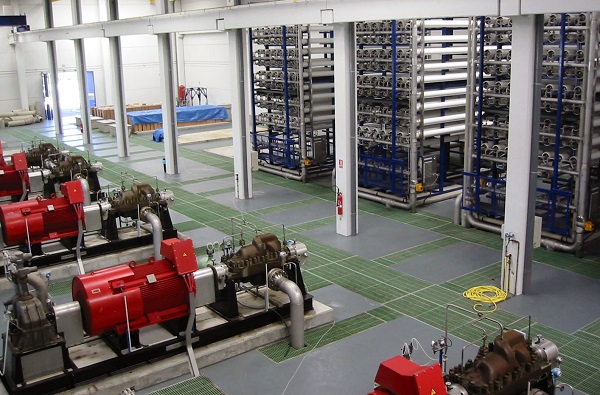
주목할 만한 사례(Notable examples)
국제담수화협회(International Desalination Association, IDA)는 향후 수십 년 간 MBR, UF, MF, NF, RO 기술을 효율적으로 사용하여 물재이용 프로젝트의 설치 수량과 처리 규모가 극대화 및 증가될 것으로 예상하고 있으며, 에너지 감소 및 비용 절감 측면에서 고도의 물재이용 기술과 해수담수화 기술의 직접적인 연관성이 예상된다고 전망하고 있다. 고도의 물재이용 기술과 위에서 설명한 물저장 및 보존 개념을 결합한 주목할 만한 사례들이 여러 곳에서 발견되고 있다.
이중에서 싱가포르, 캘리포니아, 미국의 사례들을 요약했으며, 또한 소용량 규모로 2차 처리공정의 처리수를 데미워터(demineralized water)로써 발전소에 유입수로 직접 공급하는 영국의 사례도 소개하고자 한다.
증발방식 및 멤브레인 기술을 이용한 대규모 하이브리드형 해수 담수화 설비가 많은 지역에서 건설 중에 있다. 중동 지역에 있는 최근의 설비는 대부분 증발방식의 가장 좋은 특성과 멤브레인 기술의 우수한 성능이 결합된 통합형의 하이브리드 기술로 건설되고 있다. 이로써 하루 또는 연간 수요가 달라지는 상황에서 담수화 시스템으로부터 전기 생산과 담수 생산을 위한 최적의 해결책을 제공한다. 이러한 하이브리드 프로젝트는 전기의 생산 능력을 MED(다중효용 증발법) 또는 MSF(다단 플래시법)와 결합하고, NF와 RO 시스템을 추가하여 시스템의 효율성과 물의 회수율을 증가시키는데 이바지한다.
The International Desalination Association (IDA) advises that the effective use of MBR, UF, MF, NF and RO technologies is likely to dramatically increase the number and size of water reuse projects over the next decade and we could envisage the direct coupling of advanced water reuse technologies with seawater desalination as a means of reducing energy and cost still further.
Notable examples of advanced water reuse techniques also incorporating the concept of water banking described above are currently installed at various sites around the world. Two examples in Singapore and California, United States, are summarised below. We also include a smaller UK example where secondary treated effluent is processed for feed directly as required into a power station as demineralised water.
A number of large scale hybrid seawater desalination plants are under construction utilising the thermal and membrane technologies described above. Many of the recent plants in the Middle East are being built as integrated hybrid solutions where the best properties of thermal processes are combined with the best features of membrane technology. This provides optimum solutions for power production and the production of fresh water from the desalination systems as demand varies throughout the day and year. These hybrid projects combine power generation capability with MED or MSF, and NF and RO systems are added to raise efficiency and water recovery rates.
싱가포르, ‘NEWater 프로젝트’ 통해 하수처리수를 고순도 재생수로 생산
캘리포니아, 도시용수를 MF·RO·UV처리 후 식수·관개용수 등에 사용
영국, 도시폐수를 멤브레인 기술로 초순수 물 생산 가스터빈 발전소에 공급
사우디, 라스알카히르에 세계최대 규모 하이브리드 담수화·발전시설 운영
UAE, MED-RO 및 MSF-RO와 발전설비 결합한 하이브리드 시스템 가동
싱가포르의 물재생 연구 프로젝트 ‘NEWater’
■ 싱가포르(Singapore) 1998년 싱가포르 PUB에 의해 시작된 싱가포르 물재생 연구 프로젝트에 따라 싱가포르 물공급체계에서 지하수 및 지표수의 대안으로 물재생 플랜트에서 생산되는 고순도 물의 적합성에 대한 평가가 이루어졌다. 처리된 뉴워터(NEWater)의 물은 미국 환경보호청(EPA)과 세계보건기구(WHO)의 식수기준을 모두 만족했으며, 이 물은 도시 용수를 2차 처리한 처리수를 MF, RO 및 UV공정으로 다시 처리한 것이다.
2002년 수많은 파일럿(pilot) 시험 끝에 베독(Bedok)에 위치한 대규모의 NEWater 공장과 크란지(Kranji)에 위치한 물재생 플랜트가 상업운전을 시작하게 되었다. 크란지에 위치한 물재생 시설은 처음에는 4만㎥/일 처리 규모였으나 이후 7만2천㎥/일 용량으로 확장되었다. 2003년 2월 이후로 처리수가 발전소등 산업체에 식수가 아닌 산업용수로 공급되었다.
2004년에는 셀레탈(Seletar)에서 3번째 NEWater 공장이 허가되었고 그 처리수는 정밀전자 산업에 공급되었다. 이후 싱가포르의 앙목교(Ang Mo Kio) 산업단지에서는 2차 처리된 유출수에서 생산된 고순도 물이 반도체 웨이퍼(wafer) 제조시설에 사용되었다. 최근 용량을 미국 캘리포니아의 지하수 보충설비(Groundwater Replenishment System, GWRS)와 비슷한 수준인 22만8천㎥/일 규모로 증가시킨 셈콥(Sembcorp) NEWater 시설의 추가는 싱가포르 내 물 지속 유지활동에 중요한 발전의 계기가 되었다.
NEWater 프로젝트는 싱가포르의 전체 물수요의 30%가 넘는 부분을 공급하는데, 재생수의 대부분은 지표수 보충용수로도 충당된다. 최신 NEWater 시설의 계약은 공공-민간 제휴 방식(Public-Private Partnership, PPP)으로 2008년 1월 PUB와의 계약에 따라 셈콥(Sembcorp) 기업에 의해 추진하게 되었다. 이 프로젝트는 2단계로 2년에 걸쳐 추진되는 것으로 처음 1단계는 6만9천㎥/일의 물을 생산하며 2009년에 운전을 시작했다.
이번 프로젝트는 민간 부문에 의해 설계, 건설, 소유 및 운영되는 BOO(Build Own Operate) 방식으로 두 번째이자 가장 큰 규모의 NEWater 시설이다. 이 시설은 PUB에 의해 개발된 것과 동일한 검증이 완료된 물재이용 기술을 사용했으며, 기존의 다른 NEWater 시설에 적용된 것과 같은 품질 기준치를 만족하고 있다.
The Singapore Water Reclamation Study was initiated in 1998 by the Singapore Public Utilities Board(PUB) to determine the suitability of using high-purity water as an alternative source of ground and surface water to supplement Singapore’s water supply. The treated NEWater (the braded high quality water) meets the USA Environmental Protection Agency and World Health Organisation drinking water standards. It is produced from municipal secondary treated effluent using MF, RO and UV.
Following extensive pilot testing, full scale NEWater factories at Bedok and Kranji water reclamation plants were commissioned in 2002. The largest plant at Kranji was designed to initially treat 40 MLD with a capacity to expand to 72MLD in the future. Since February 2003, treated water has been supplied to industries for non-drinking use in power generation and other applications.
In 2004, the third NEWater factory at Seletar was commissioned, which began supplying treated water to the microelectronics industry. Then, high purity water produced directly from the secondary treated effluent was being used in semiconductor wafer fabrication plants at the Ang Mo Kio industrial area in Singapore. The recent addition of the Sembcorp NEWater Plant marks a major step in Singapore’s water sustainability activities with its total capacity increasing significantly to 228 MLD, a similar capacity tothe GWRS in California (see below).
The NEWater Project meets more than 30% of Singapore’s total water demand with the majority of the reclaimed water supplementing surface water reservoirs. The contract for the latest NEWater facility was awarded to Sembcorp in January 2008 by the PUB under a public-private partnership initiative. The project was engineered in two phases over a two-year period. The initial phase of the plant, producing 69MLD, began operations in 2009.
This was the second and largest NEWater plant to be designed, built, owned and operated by the private sector, while PUB owns another three plants. This new plant uses the same established and proven water reuse technology pioneered by PUB. NEWater from this plant meets the same quality standards as those applicable to the other NEWater plants.
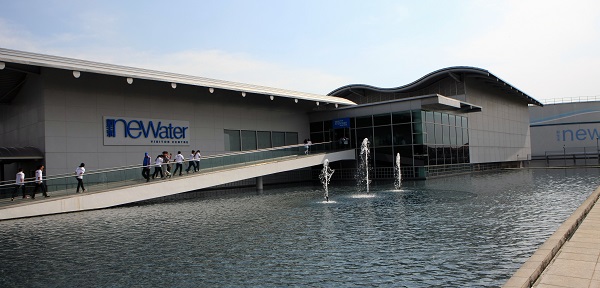
캘리포니아 ‘지하수 보충 시스템’, 도시용수 재사용
■ 캘리포니아(California) 캘리포니아의 ‘지하수 보충 시스템(Groundwater Replenishment System, GWRS)’ 또한 이전에는 태평양으로 배출했던 도시용수의 2차 처리된 물을 처리하고 있으며, 처리공정은 과산화수소 처리와 함께 MF, RO 및 UV의 3단계의 처리를 거친다. 처리를 거쳐 캘리포니아 및 미국 연방의 식수기준보다 높은 수질의 물을 생산한다. 처리된 물은 지하수 저장조의 보충수로 충전되거나 저염도 물의 공급량을 증가시켜 향후 식수의 생산, 관개용수 및 농업용수 등으로 사용된다. 2008년 1월부터 시작된 고도정수처리 프로젝트는 26만5천㎥/일 규모의 높은 수질의 물을 생산하며, 필요시 추가적인 처리 과정을 거치면 캘리포니아 북부 및 중앙부의 오렌지카운티에 거주하는 대략 60만 명의 주민들의 물수요를 충족할 수 있다.
GWRS의 설계와 건설은 오렌지카운티 상수기관(Orange County Water District, OCWD) 및 오렌지카운티 하수기관(Orange County Sanitation District, OCSD) 에서 공동으로 기금을 모아 진행된 프로젝트로 이 기관은 30년 이상 협업 관계를 유지, 과거 워터팩토리 21(Water Factory 21) 플랜트 프로젝트를 수행한 경험으로 이번 GWRS의 추진 개발을 이끌게 되었다. GWRS에 공급되는 물은 일단 OCSD 하수처리장에서 처리되는데, 폐수를 75만7천㎥/일 용량으로 수집하여 몇 가지 공정을 거친 뒤 상당한 양의 불순물을 제거한다.
한편, 엄격한 수원 관리 프로그램에 의해 파운틴 밸리 지역 및 헌팅턴 비치 지역에 위치한 OCSD의 시설로 금속물질 및 화학물질이 들어오는 것을 제한한다. 폐수는 이후 바 스크린(bar screeb), 그리트 챔버(grit chamber), 살수여상 필터(trickling), 청징조(clarifier) 및 소독공정의 과정을 거친 후에 GWRS 설비로 보내진다. GWRS에서는 MF와 RO에 의한 처리를 한 뒤, 처리된 물은 과산화수소와 함께 높은 조도의 UV 광선에 노출시켜 RO 멤브레인을 통과할 수 있는 미량의 유기물질을 살균 및 제거한다. 이 공정은 이러한 유기물질을 제거하는 목적으로 효과적인 살균작용과 고도의 산화공정 기능을 제공한다.
The Groundwater Replenishment System(GWRS) in California also processes municipal secondary treated effluent that would have previously been discharged into the Pacific Ocean. The ‘waste’ is treated using a three-step process consisting of MF, RO and UV with hydrogen peroxide. The process produces high quality water that exceeds all Californian and US federal drinking water standards. Treated water is used to replenish groundwater reserves and increase the supply of lower saline sources for subsequent drinking water production, irrigation and agriculture. Operational since January 2008, this advanced water purification project can produce up to 265MLD of high quality water, enough, when treated further, to meet the needs of nearly 600,000 residents in north and central Orange County, California.
The design and construction of the GWRS was a project jointly funded by the Orange County Water District and the Orange County Sanitation District(OCSD). These two public agencies have worked together for more than 30years, previously on the Water Factory 21 project that led to the development of the GWRS. Water used in the GWRS is first treated at OCSD, which collects more than 757MLD of wastewater and removes a high degree of impurities through several processes. A stringent source control program limits metals and chemicals flowing into OCSD’s plants in the Fountain Valley and Huntington Beach areas.
The wastewater undergoes treatment through bar screens, grit chambers, trickling filters, activated sludge systems, clarifiers and disinfection processes before it is sent to the GWRS. Following treatment by MF and RO in the GWRS, the treated water is exposed to high intensity UV light with hydrogen peroxide to disinfect and destroy any trace organic compounds that may have passed through the RO membranes. This provides an effective disinfection and advanced oxidation process that eliminates these compounds.
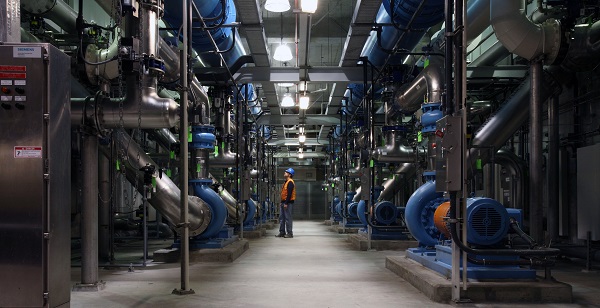
영국, 도시폐수를 고도처리 후 대체수자원으로 사용
■ 영국(UK) 영국에서는 비교적 소규모의 프로젝트가 10년 넘게 진행되어 왔으며, 도시 폐수의 2차 처리된 물을 처리하는데 MF와 RO기술을 결합하여 처리, 대체수자원으로 사용하고 있으며, 피터보로우(Peterborough) 가스터빈 발전소에 고순도 물을 공급하고 있다. 발전소는 오수처리장 인근에 설치되어 있으며, ACWA Services가 시설을 짓고 완공하여 2000년에 상업운전이 시작되었다.
RO시설에 의해 발전소에서 전도도 60㎲/cm 이하의 탈염수 생산이 가능하여 탈염수의 생산량을 20% 늘리면서 동시에 이온교환 재생에 들어가는 비용의 90% 이상을 절감할 수 있었다. 이는 1천250㎥/일 물량의 식수를 절약하게 되어 결과적으로 발전소의 전체 물사용량을 11% 감소시키는 효과를 가져왔다.
플래그 펜(Flag Fen) 하수처리장의 재이용 프로젝트가 싱가포르 NEWater(뉴워터) 프로젝트나 미국의 GWRS와 같은 대규모는 아니지만 이미 검증된 고도의 여과 및 분리 기술을 이용한 대체수자원을 직접 이용하는 도시지역 또는 소규모 장치의 산업체에 대하여 식수에 대한 수요를 절감할 수 있다는 것을 보여준다. 프로젝트의 핵심 원동력은 피터보로우 발전 시설과 플래그 펜(Flag Fen) 하수처리 시설의 지정학적 위치였으나 기존 발전소의 발전형식, 수질 및 수량적 요구사항 때문에 시너지 효과는 그리 크지 않았다.
A smaller scale project in the UK has been in operation for over a decade and incorporates MF and RO technology with secondary treated municipal effluent again used as an alternative source, processed into high purity water for feeding directly into the Centrica-owned Peterborough gas turbine power station. The station is located adjacent to Flag Fen Sewage Treatment Works. ACWA Services built and installed the plant, commissioning the system in 2000.
The RO plant produces water with a conductivity of less than 60㎲/cm enabling demineralised water production at the power station to increase by 20% with a reduction of over 90% in the costs of ion exchange regeneration. A total of 1.25MLD of drinking water is saved (previously purchased from Anglian Water) which initially reduced the power station’s total water usage by 11%.
Whilst the Flag Fen project is not on the same throughput scale as the NEWater Project or the GWRS, it does show demand for drinking water can be reduced at the municipal or smaller scale by industries utilising alternative sources of water directly, using proven advanced filtration and separation technology. The geographical location of the power station in Peterborough and Flag Fen sewage treatment works was a main driver for the project. But the opportunity for synergies and hybridisation were limited due to the type of power station in existence and the water quality and volume requirements.
사우디의 하이브리드 형태의 담수화·발전시설
■ 사우디아라비아(Saudi Arabia) 사우디아라비아의 라스알카히르(Ras Al-Khair) 하이브리드 시설은 현재 가동 중인 시설 중 세계에서 가장 큰 규모의 하이브리드 담수화 및 발전시설이다. 이 시설에서는 RO 멤브레인과 MSF 증발방식 기술을 이용하여 각각 30만8천㎥/일 및 72만8천㎥/일 규모의 물을 생산한다. 시설은 전기와 물을 생산하는 이중 목적 시설로 담수 102만5천㎥/일 및 전력량 2천650㎿를 생산한다.
이 플랜트는 2011년 2월 건설이 시작되었고 2015년 초 완공되었다. 발전시설은 5개의 600㎿ 복합 사이클 가스터빈 설비와 2개의 220㎿ 단일 사이클 가스터빈 설비로 이루어져 있다. 생산된 전력 및 물 중 1천350㎿의 전력과 2만5천㎥/일 규모의 물은 근처에 위치하는 마덴(Maaden)의 알루미늄 정제공장에서 사용한다.
가동 중인 시설로 가장 큰 규모의 하이브리드 형태의 가열방식 담수화 및 발전시설은 사우디아라비아에 위치하고 있는 MED 기술을 이용한 쥬베일 플랜트(Jubail Water and Power Plant, JWAP)이다. 이는 SIDEM에 의해 건설된 Marafiq 플랜트로 27개의 MED 설비와 80만㎥/일 규모의 설비로 되어 있다. 비용은 10억 달러가 소요됐으며 물의 담수와 더불어 2천744㎿의 전기를 생산하는 이중 목적 시설이다.
The largest operational hybrid desalination and power production plant in the world is currently the Ras Al-Khair hybrid plant in Saudi Arabia that incorporates RO membranes and MSF thermal technology to produce 308MLD(308,000㎥/d) and 728MLD(728,000㎥/d) respectively. The plant is dual purpose, with an export production capacity of 1,025MLD(1,025,000㎥/d) desalinated water and an electricity production capacity of 2,650MW.
The construction of the plant commenced in February 2011 and was completed earlier this year. The power plant comprises five 600MW combined cycle gas turbine units and two 220MW single cycle gas turbine units. Maaden’s new alumina refinery, located nearby, will utilise up to 1,350MW of the electricity and 25MLD(25,000㎥/d) of the water produced.
The largest operational hybrid thermal desalination and power production plant is currently the Jubail Water and Power plant(JWAP) incorporating MED technology, also located in Saudi Arabia. This is a Marafiq plant built by SIDEM with 800MLD(800,000㎥/d) production capacity from 27MED units. The cost was US$ 1bn. This is also a dual purpose plant generating 2,744MW electricity in addition to the desalinated water.
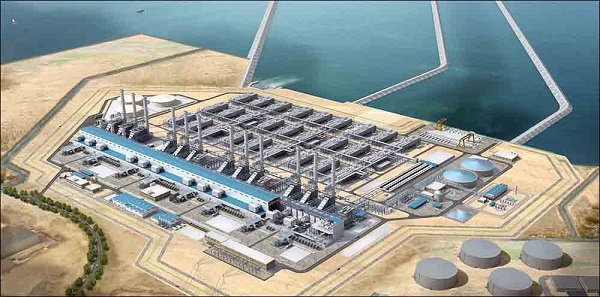
UAE의 ‘후자이라 Ⅰ·Ⅱ 프로젝트’
■ 아랍에미리트(UAE) 현재 가장 큰 규모의 MED-RO 결합 하이브리드 시설은 ‘후자이라(Fujairah)Ⅱ 프로젝트’이다. 이는 UAE에서 녹초지 개발로 건설된 SIDEM과 Veolia사 합작의 프로젝트로 2천㎿의 전력과 59만1천㎥/일의 담수를 생산하며, 하이브리드 시스템은 복합 사이클 형태로 작동하는 5개의 고효율 가스 터빈을 포함한다.
UAE의 셈콥(Sembcorp) 물·전력 회사에서 소유하고 있는 ‘후자이라(Fujairah)Ⅰ 프로젝트’는 2004년에 시운전되었으며, MSF-RO 하이브리드 시스템이 발전설비와 결합하여 전기 893㎿와 담수 45만5천㎥/일을 생산한다.
발전용량을 최대로 하는 반면 해수 및 대체수자원을 최대의 효율로 사용하려면 물순환 구조를 통합적으로 검사하여 포괄적인 수자원 관리가 필요하다고 인식되고 있다. 또한 폐수로 방출, 수요량, 누수 및 증발로 인한 손실을 줄여 물관리의 효율을 최대화할 필요가 있다. GWRS 시스템과 NEWater 시설은 어떻게 대체수자원이 도시 규모에서 사용되어 식수 공급을 늘리고 기존의 원수 사용의 압박을 줄여주는지를 보여주는 좋은 사례이며, 폐수의 2차 처리수에 대한 여과와 분리기술에 의한 처리는 현재 잘 증명되어 있는 고도의 기술로 지속적으로 고수질, 고순도의 물을 생산할 수 있는 기술이다.
사우디아라비아와 UAE에서의 대규모 경험에 기초하여 우리는 대체 수자원 및 폐수 시스템이 다양한 지역의 물자원을 이용하여 전력 생산 시스템에서 냉각, 공정 및 담수 공급이라는 용도로 미래 프로젝트에 포함될 수 있는 것을 예상해볼 수 있다. 공정처리 기술의 선택에서 하이브리드 기술이 가장 효과적인 기술로 선택되어 전력 수요가 낮은 시기와 재사용 가능한 에너지를 많이 생산하는 기간에 발전 용량을 최대한 증가시켜 에너지 수요를 줄이고 도시의 환경에 대한 영향의 최소화가 가능하다. 현재 당면 과제는 먹는물 수질의 안전성을 유지하는 동시에 물효율과 에너지 효율이 최대가 될 수 있는 통합 해결책의 개발이다.
The largest hybrid MED-RO plant currently is the Fujairah II project, a SIDEM/Veolia project built as a green field development in the United Arab Emirates and producing 2000 MW of power and 591MLD of desalinated water. The hybrid system includes five high-efficiency gas turbines operated in combined cycle mode. The Fujairah I project, owned by Emirates Sembcorp Water and Power Company and commissioned in 2004, comprises a hybrid MSF-RO system again combined with power production, with an electricity generation capacity of 893MW and a seawater desalination production capacity of 455MLD.
We have suggested that comprehensive water management, which examines the water cycle as a whole, is required to make the most effective overall use of seawater and alternative sources of water whist optimising power generation capacity. In addition, there is the need to reduce waste, demand, leakage and evaporation losses so we can maximise water management efficiency. The GWR system and NEWater plants provide excellent examples of how alternative sources can be used on a municipal scale to expand drinking water supplies and reduce the pressure on traditional raw water sources. Filtration and separation technology for the treatment of secondary effluent is now well proven and consistently high quality, high purity water can be produced.
Based on the large scale experiences in Saudi Arabia and the United Arab Emirates, we can envisage the possibility of future projects where alternative water and seawater systems can become integrated with power generation systems to provide cooling, process and freshwater for banking and storage when required, using various local water sources. This would make the most effective use of hybridisation in the selection of process technologies, reducing the overall energy requirement and environmental impact of a municipality by making full use of generation capacity during periods of low power demand and high renewable energy production. The challenge is for the development of integrated solutions at the municipal scale where both water efficiency and energy efficiency can be maximised whilst maintaining security of drinking water supply.

향후 전망(Future Outlook)
전세계적으로 인구의 증가, 기후변화, 산업의 발전 및 에너지 수요의 증가로 인해 물공급에 대한 커다란 압박이 지속되고 있다. 오늘날의 물부족 문제가 크게 현실화되어 물 및 에너지 분야에서의 기술개발과 투자증가를 유발시키고 있다. 따라서 새로운 기술개발 및 제조공정의 개선을 이끌어왔고 이는 앞으로도 계속될 것으로 예상된다.
The world will continue to face pressure on its water supply. Population growth, climate change and industrial development with increased energy requirements will inevitably force the trend to continue. But the high visibility of the water scarcity issue today has driven and will continue to drive innovation and investment in the water and energy sectors, with the development of emerging technologies and improved manufacturing processes.
[원문출처 = 『Filtration + Separation』(www.filtsep.com) 5∼6월호 / 번역 = 김덕연 본지 편집위원]
[『워터저널』 2015년 9월호에 게재]

